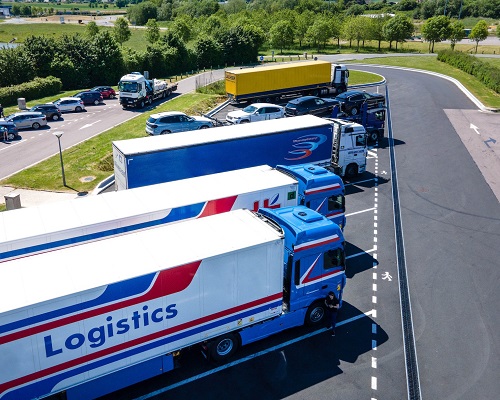<< Research Projects Overview << Year Five Projects Overview
Coordination of Connected and Automated Trucks for Platooning Considering Turning Along an Arterial Corridor

Professor, ZACHRY Department of Civil Engineering
Texas A&M University
yzhang@civil.tamu.edu
Associate Professor, ZACHRY Department of Civil Engineering
Texas A&M University
bwang@civil.tamu.edu
Proposal Summary and Objectives
Freight traffic affects the performance of the road network significantly. When truck traffic is significant, the coordination of signals could fail according to the research of FMRI’s first-year project. Trucks need extra distance and time for deceleration and acceleration. A traffic bottleneck appears more easily on a road segment or intersection where freight traffic is significant. To address these problems, strategies have been developed in the FMRI first and the second-year project to formulate multiple trucks’ trajectories to pass consecutive signals individually and cooperatively considering mixed traffic conditions. The stability problem of vehicle streams has been studied in the third-year project. On an arterial corridor, when freight traffic is significant enough, a truck-only lane may be a good idea to reduce the negative impact on the traffic flow when trucks and passenger cars are mixed in the same lane, and trucks with connected and autonomous vehicle technologies with make truck platooning practical and operational efficient. This project investigates the method for truck platooning in a truck-only lane. Unlike the issue of truck platooning on a freeway, turnings could happen more frequently on an urban arterial corridor. Considering the turning vehicles that join or leave from the corridor either at a midblock or intersection is the main concern of this year’s project and present a new challenge in research of truck platooning. To ensure the safe turning maneuver when truck platooning is on the corridor has led to a coordination problem for vehicle maneuvers. Current methods for coordinating CAVs at intersections do not consider the signals in urban intersections and the truck platoon in a truck-only lane. This research will model the maneuvers of CAVs as time-discrete events and provide an analytical solution that schedules the time of CAV trucks to pass an intersection or join the platoon in the corridor given their sequences.
Funding Amount:
Status:
Active
Duration:
Sep 1, 2021 - Jul 30, 2022